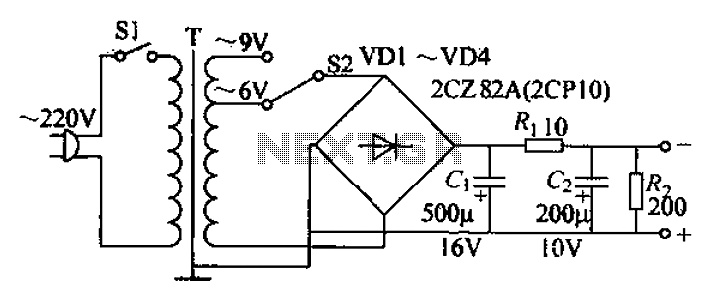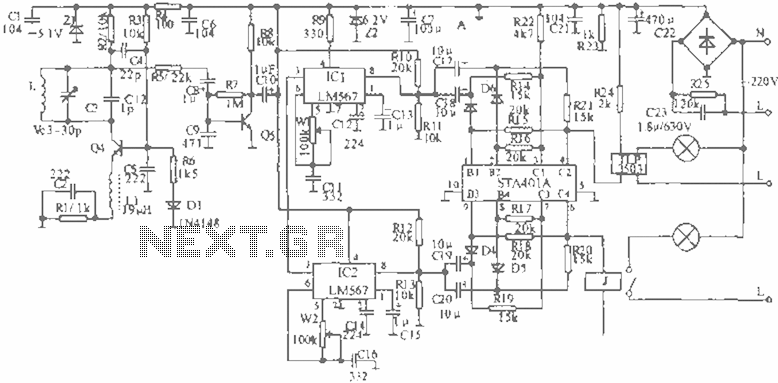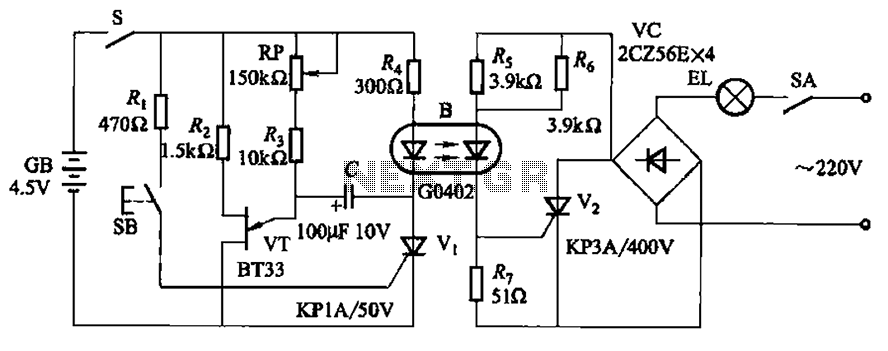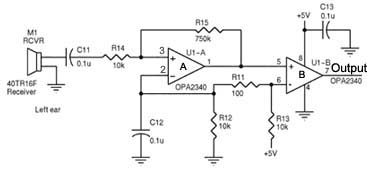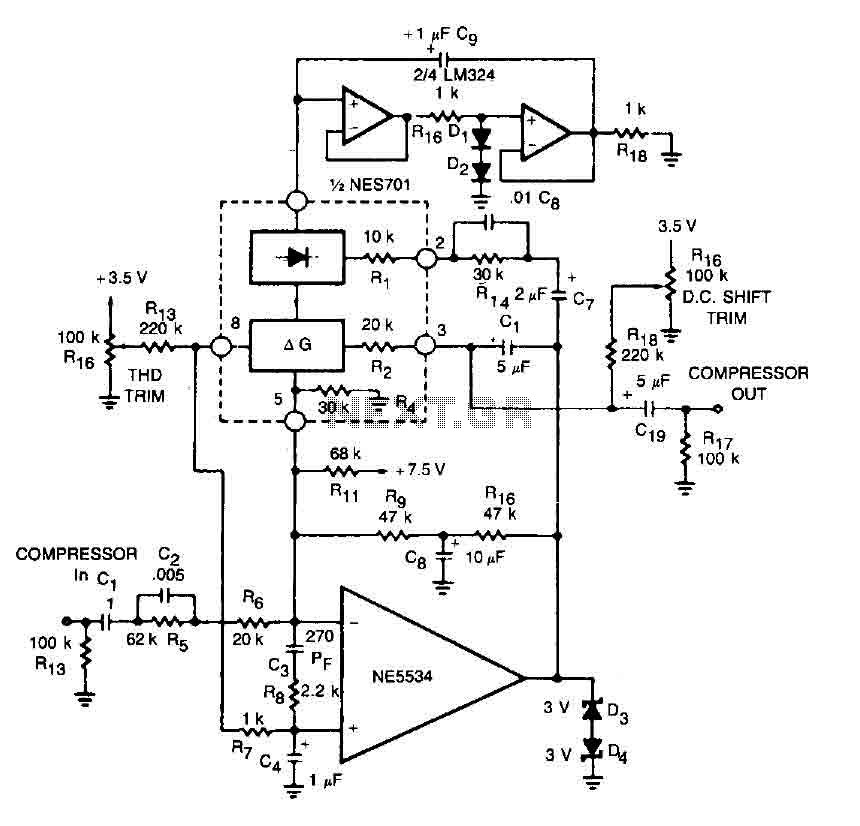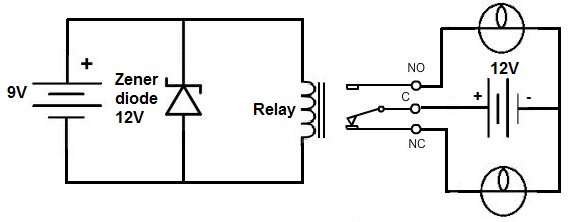
tda2030a amplifier circuit used in home theaters

This integrated circuit (IC) requires fewer external components, making it simpler for beginners to assemble it on a veroboard. The original circuit was sourced from its datasheet. A slightly modified version of the circuit is presented below. This circuit can operate with a single supply line; however, that configuration yields lower output power. Therefore, a bi-voltage topology is commonly employed. A supply of +/- 12V is needed. A 12-0-12 center-tapped step-down transformer can easily provide +12V and -12V. Additionally, since this IC does not necessitate a regulated supply, voltage can be directly supplied from the rectifier with the inclusion of just a capacitor.
The circuit design described utilizes an integrated circuit that is particularly advantageous for beginners due to its minimal external component requirements. The bi-voltage topology, which employs both positive and negative voltage supplies, enhances the output power capabilities of the circuit compared to a single supply configuration.
To implement this design, a 12-0-12 center-tapped transformer is essential. This transformer will provide the necessary voltage levels by producing +12V and -12V outputs. The center tap serves as the ground reference for the circuit, allowing for effective utilization of the bipolar power supply.
The rectification process involves converting the alternating current (AC) output from the transformer into direct current (DC). This can be achieved using a full-wave bridge rectifier, which is commonly employed for such applications. The output of the rectifier will be a pulsating DC voltage, which can be smoothed using a filter capacitor. The capacitor will help reduce voltage ripple, providing a more stable DC voltage for the IC.
It is important to note that the IC does not require a regulated power supply, which simplifies the design process. The unregulated output from the rectifier, combined with the filter capacitor, is sufficient for the IC's operation. This characteristic is particularly beneficial in applications where simplicity and ease of assembly are paramount.
Overall, this circuit design exemplifies an efficient and beginner-friendly approach to utilizing an integrated circuit with a bi-voltage power supply, leveraging readily available components to achieve desired performance outcomes.This IC require less external components too, making it easier for a beginner to make this on veroboard. The original circuit I got from it`s datasheet. A little modified circuit below, This can be operated with single supply line, but that topology gives less output power, hence this bi-voltage topology is used everywhere.
We need to provide +/- 12V to it. We can easily get +12V and -12V from a 12-0-12 CT step down transformer. And, as this IC doesn`t require regulated supply, we can feed voltage directly from rectifier with just a capacitor. 🔗 External reference
The circuit design described utilizes an integrated circuit that is particularly advantageous for beginners due to its minimal external component requirements. The bi-voltage topology, which employs both positive and negative voltage supplies, enhances the output power capabilities of the circuit compared to a single supply configuration.
To implement this design, a 12-0-12 center-tapped transformer is essential. This transformer will provide the necessary voltage levels by producing +12V and -12V outputs. The center tap serves as the ground reference for the circuit, allowing for effective utilization of the bipolar power supply.
The rectification process involves converting the alternating current (AC) output from the transformer into direct current (DC). This can be achieved using a full-wave bridge rectifier, which is commonly employed for such applications. The output of the rectifier will be a pulsating DC voltage, which can be smoothed using a filter capacitor. The capacitor will help reduce voltage ripple, providing a more stable DC voltage for the IC.
It is important to note that the IC does not require a regulated power supply, which simplifies the design process. The unregulated output from the rectifier, combined with the filter capacitor, is sufficient for the IC's operation. This characteristic is particularly beneficial in applications where simplicity and ease of assembly are paramount.
Overall, this circuit design exemplifies an efficient and beginner-friendly approach to utilizing an integrated circuit with a bi-voltage power supply, leveraging readily available components to achieve desired performance outcomes.This IC require less external components too, making it easier for a beginner to make this on veroboard. The original circuit I got from it`s datasheet. A little modified circuit below, This can be operated with single supply line, but that topology gives less output power, hence this bi-voltage topology is used everywhere.
We need to provide +/- 12V to it. We can easily get +12V and -12V from a 12-0-12 CT step down transformer. And, as this IC doesn`t require regulated supply, we can feed voltage directly from rectifier with just a capacitor. 🔗 External reference
